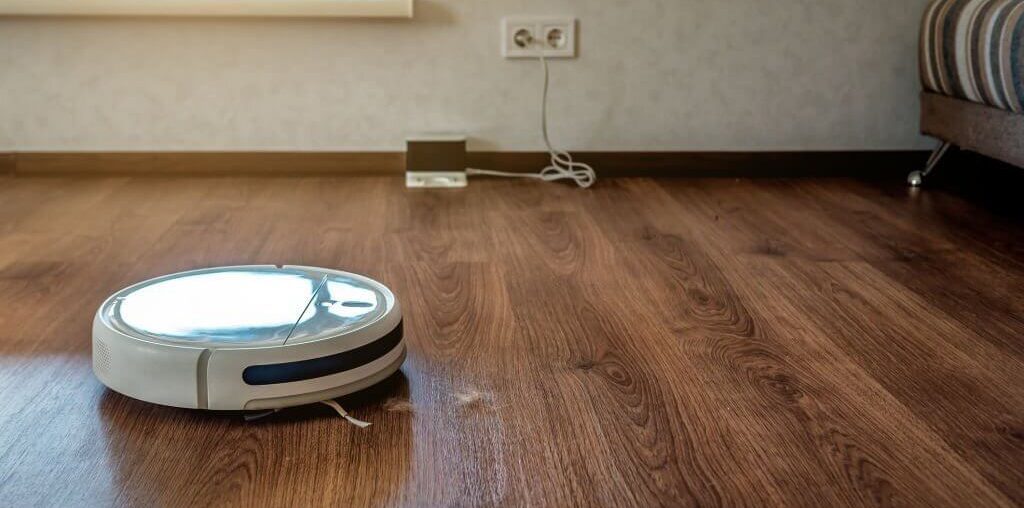Electronic technology has come a long way. Now, intelligent robots have entered the home to help the homeowner with one of the most mundane tasks: vacuuming. These little automated dirt collectors aren’t mindless little machines that wander around and accidentally pick up dirt; they are intelligent, programmed automatons that look for dust and dirt, avoid obstacles and park in recharging carriages when the work is done.
Table of Contents
Introduction : How much electricity does your robot vacuum consume?
The typical range of suction power for home robotic vacuum cleaners is 50 to 120 watts. Once fully charged, the vacuum robot consumes around 3.6 watts of electricity in standby mode. That is about 3.6 kWh per month. Charging a vacuum robot takes 3 hours at around 30 watts.
Return To Base, Recharge And Head Back
Some of these unobtrusive entertainment devices can be taken back to base, recharged and put back to work without having to look around.
They also can pair with Alexa, return to their docking station and use fall detection technology to prevent them from falling down the stairs.
It can move around your home with minimal fuss, and there’s little you need to do other than empty the trash can. With the newer models, you don’t even have to do that. He does it himself.
However, their robot vacuum, even the high-end model with a staggering price tag, can’t break it in terms of performance. It doesn’t pack the punch of a standard vacuum cleaner, and at times you might be swept up in a strange wave of nostalgia. Don’t get me wrong, an average robot will do a good job removing all the obvious dust and dirt, but they can’t do it with conviction.
There’s also the slight issue that the average robot can’t handle awkward crevices and tight spots, although higher-end models are better equipped in this department.
How much Electricity does Roomba Use ?
Power Classes for Robot Vacuums
Vacuum Robots Can Be Divided Into Three Performance Classes:
High-Power Robot Vacuums (90-120W): This class of robot vacuums has a suction power of around 90-120W. Such robots pick up pet hair and clean carpets more efficiently than some models. These models are harder to find in stores and can be found on Amazon.
Medium-power robot vacuums (30-35 W): In this class, robot vacuums have a suction power of around 30-35 W. Most commercially available models belong to this category. Its abilities are enough to remove dirt and clean carpets.
Low-Power Robot Vacuum Cleaner (15-20 W): In this class, we have robot vacuum cleaners with a suction power of around 15-20 W. Such a vacuum cleaner can only do simple tasks such as: removing dust and small fluff from clothes. This device will not be able to clean the carpet or remove the worst of the dirt.
Should I Keep My Robot Vacuum Plugged In?
You can also place the robot vacuum fully charged on the charging station/automatic emptying station. What prevents the battery from being overcharged is the battery protection circuit. Once the vacuum robot is fully charged, it no longer consumes electricity. In this way, the vacuum cleaner can always be ready for use and cleaned on time every day.
However, if you stay for a longer period of time, e.g. B. a week, it is recommended to disconnect the adapter and the charging base/auto-drain station and turn off the main power switch of your robot vacuum cleaner for safety reasons.
When not travelling, it is recommended to leave the machine on the bed after fully charged to ensure sufficient charge for the next cleaning. Dont turn off the machine, it isn’t necessary.
Do vacuum cleaners use a lot of power?
While robot vacuums are touted as more energy efficient, experts have found that homes with these devices are actually using more electricity. Compared to manual vacuum cleaners, robot vacuums consume less electricity per unit of time, which explains why robot vacuums can be called energy-saving devices.
Despite expectations that robot vacuums would replace manual vacuums, some homeowners continued using traditional vacuums for proper cleaning. The robot vacuums, while fun, ended up being the less efficient of the two and only worked as a compliment. As a result, robotic vacuum cleaners increased overall household energy use rather than reducing energy use.
So why own a Robovac when it increases your resource consumption (and your electricity bill)? According to some researchers, the answer is simple: higher standards of cleanliness. Researchers found that robotic vacuum cleaners could fuel efforts towards cleaner homes.
As cleaning trends change over time, smart home technologies encourage a new immaculate home. For these homes, robot vacuums fulfil this cleaning ideal, even if you think traditional vacuums can do a similar job.
Currently, the overall environmental impact needs to take into account the definition of smart devices. The technologies have the potential to reduce energy demands, at least in the case of robotic vacuum cleaners, a reality of increased household energy consumption. Either because of the highest standards of cleanliness or because of users’ emotional bond with these devices.
Are Robot Vacuums Energy Efficient?
Not only do these smart devices connect to the internet, but you can also manage them with your smartphone and even schedule when your front door is locked at night.
The living spaces were equipped with electricity and supported new technologies such as dishwashers, televisions and the regular use of hand vacuum cleaners. Now, a century later, in the 2000s, the digital revolution of home life is upon us. While the first wave made manual work at home easier, this second wave automated it with smart home technologies.
Robot vacuums are the most prevalent device in this suite of smart home technologies. There are currently many robot vacuum cleaners in circulation around the world. Our research team studied the social and environmental impacts of these smart devices.
By conducting a series of in-home interviews and participant-led technology tours in homes, the researchers examined the relationship between robotic vacuum cleaners, cleaning standards and overall energy use, with interesting results.
Robot Vacuums Are More Energy Efficient ?
Some factors to consider when comparing a robotic vacuum to its predecessor, the handheld vacuum!
First and foremost is the performance class of your respective vacuum robot. As mentioned above, these devices come in one of three power classes: high power (90-120 W), medium power (30-35 W), and low power (15-20 W). Then you have to consider how often you vacuum, the power of the vacuum cleaner, and the house’s size.
Robot vacuums are energy efficient and more energy efficient than regular handheld vacuums. Upright vacuums typically use between 1,000 and 2,200 watts of electricity per hour of operation, which is typically between $7.80 and $16.80 if you use your upright vacuum for 2 hours every day for a month.
Even with the extra power needed to plug in a robot vacuum and not charge it (5W) or keep it charged (10W), robot vacuums like DEEBOT X1 OMNI still use about 15 times less power than a handheld vacuum.





1 Comment
Pingback: The 5 Best Robot Vacuum For Garage Floors ( Include Our Choice) - Robot Vacuums Guide